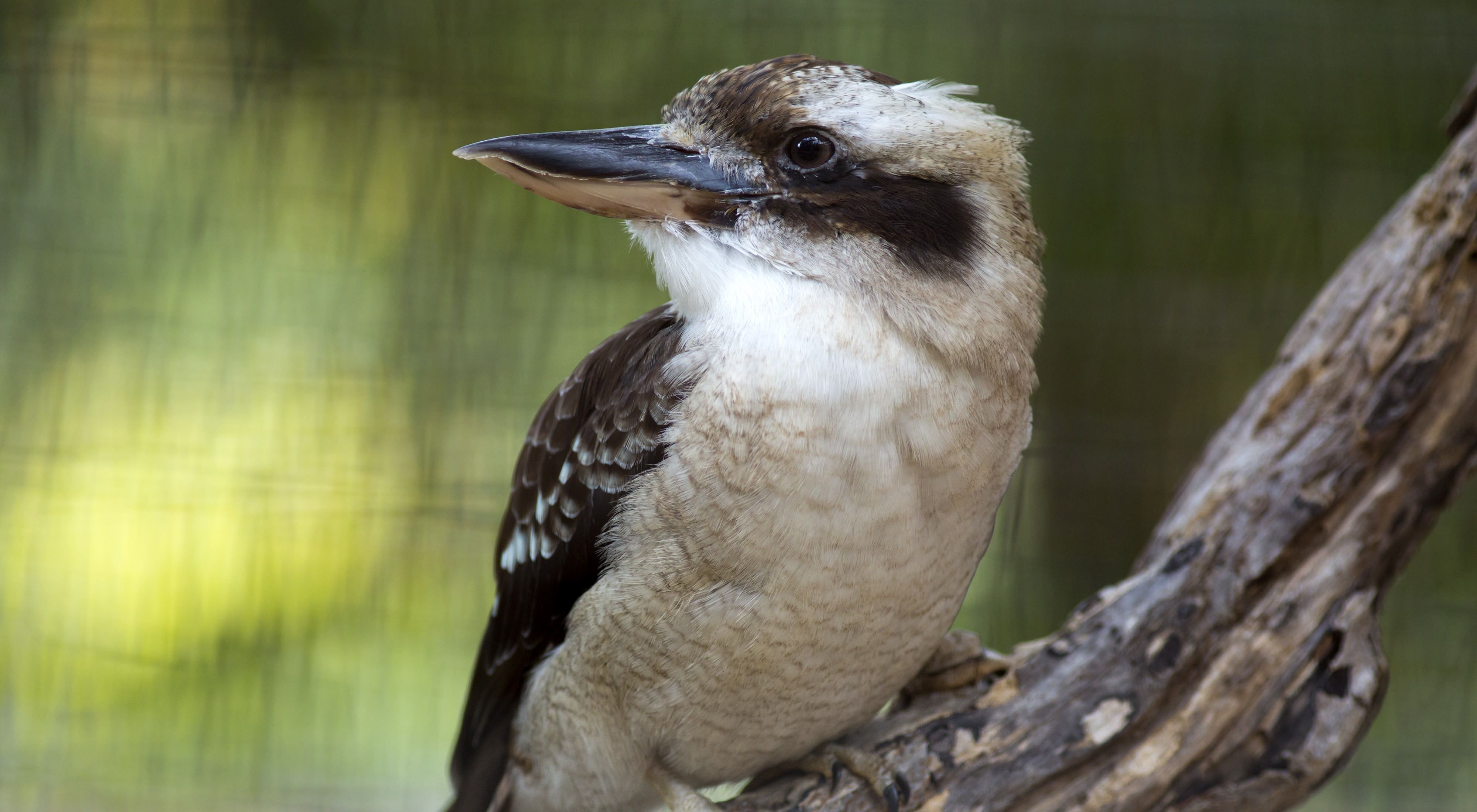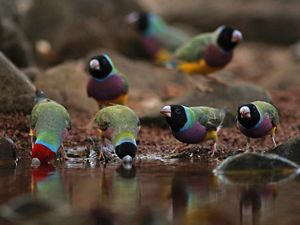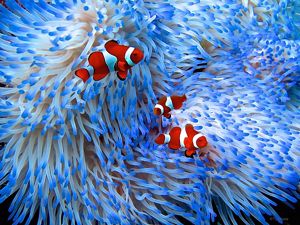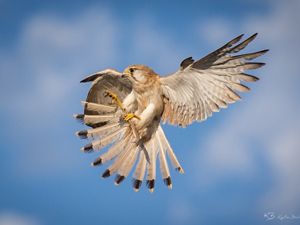Laughing Kookaburra
The Laughing Kookaburra native to eastern Australia makes a very familiar call sounding like raucous laughter. Their call is used to establish territory among family groups, most often at dawn and dusk. One bird starts with a low, hiccuping chuckle, then throws its head back in raucous laughter. Often several others join in. If a rival tribe is within earshot and replies, the whole family soon gathers to fill the bush with ringing laughter. Hearing kookaburras in full chorus is one of the more extraordinary experiences of the Australian bush.
The laughing kookaburra is the largest kingfisher. It is a stout, stocky bird with a large head, prominent brown eyes, and a very large bill. They have a distinctive dark eye stripe. The sexes are very similar, although the female is usually larger and has less blue to the rump than the male.
Diet and Habitat
Kookaburras are almost exclusively carnivorous, eating mice, snakes, yabbies, insects, small reptiles and the young of other birds. In suburban parks and gardens they can become quite brazen and will happily snatch a sausage or two off your barbecue!
They live in dry eucalypt forests, woodlands, city parks and gardens and like to live in the same territory throughout the year. Laughing Kookaburras are monogamous, retaining the same partner for life. A breeding pair can be accompanied by up to five fully grown non-breeding offspring from previous years that help the parents defend their territory and raise their young.
Kookaburra chicks may be blind and featherless once hatched but they are still very aggressive. The young chicks have special hooks on their beaks. They use these to fight each other in the nest – the first two hatchlings often pecking the third and final chick to death leaving more food for the themselves.
Unfortunately, Laughing Kookaburras are also well established in south-west Western Australia, Tasmania and New Zealand after being artificially introduced, possibly because of its reputation for killing snakes. In WA they are significant threat to native lizard species and take up vital nesting hollows that endangered black cockatoos need to breed successfully.
Laughing Kookaburra photos








Discover more
Get email updates to learn how we're conserving Australia's precious habitats
Get updatesBlue-winged Kookaburra
The Blue-winged Kookaburra of northern Australia makes a call described more like a harsh, cackling scream or even maniacal barking.
They have a much brighter colouration, with light coloured eyes, and are more top-heavy with broader showers and a larger beak than the considerably shyer cousin the Laughing Kookaburra. There are differences in appearance between male and females with a blue tail in the male, and a rufous tail (reddish-brown or brownish-red) with blackish bars in the female. Immature birds have more prominent brown bars and marks in their plumage, giving a "dirty" appearance, and their eyes are predominantly brown for the first two years of life.
Diet and Habitat
Blue-winged Kookaburras can be found in tropical and subtropical open woodlands, grasslands, paperbark swamps, timber on watercourses, clearings, farmlands, parks and gardens of northern Australia.
They hunt and eat a great variety of animals that live on or close to the ground. They appear to hunt a high proportion of snakes, possibly because these are more common in the tropics. They also eat smail reptiles, frogs, insects and other invertebrates. Before taking prey, they're seized with the bill after a gliding flight. When deemed a suitable size, prey is then taken on the ground by hunting from a perch. Kookaburras can be seen beating their food against a perch area. This is to help breakup the bones and tendons, as well as tendering the food for easier digestion.
Blue-winged Kookaburras have suffered from loss of habitat resulting from land clearing, and are often killed on roads as adult birds are slow flyers and vulnerable to being hit by cars on country roads. The red goshawk and rufous owl prey upon the blue-winged kookaburra.
Read more about our work to protect the tropical woodland home of the Blue-winged Kookaburra here.
Blue-winged Kookaburra Photos






The Spangled and Rufous-bellied Kookaburras, natives to Indonesia and Papua New Guinea, occasionally visit Australian islands of the Torres Strait.
Get the Latest Updates on our Work
Get email updates to find out how we're helping to conserve Australia's iconic natural landscapes and crucial wildlife habitats.



